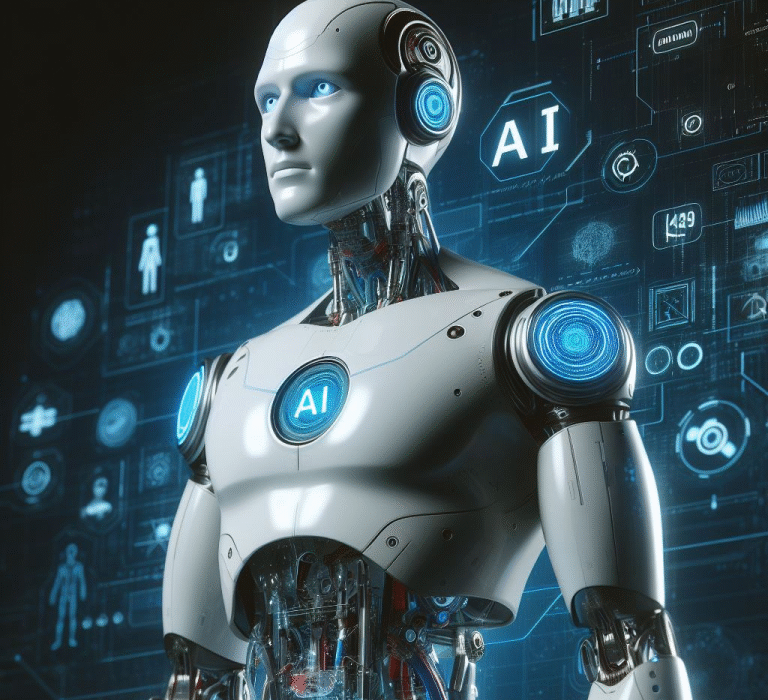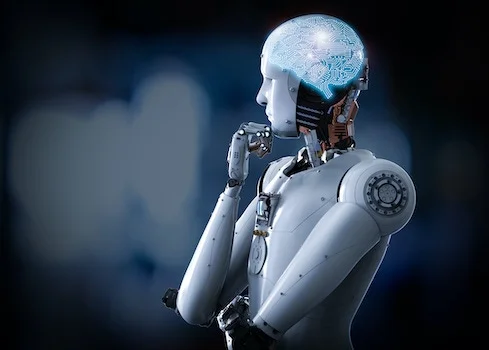It’s late at night. You’re scrolling through Instagram, eyes heavy, brain buzzing. One thumb flick, and suddenly a reel appears: a recipe for the exact chocolate lava cake you were craving, narrated in the soothing voice of a chef who might as well be whispering directly into your soul. You pause, transfixed.
The video ends. You flick again. A snippet from your favorite comedian pops up, punctuated by the roar of audience laughter. Next, a travel vlog shows mist rolling over a mountain vista in a country you casually Googled last week. You don’t remember telling your phone you’d been feeling restless. Or lonely. Or in need of a sweet treat. Yet somehow, your feed knows.
Close the app. Open Netflix. There’s your personalized row: Because You Watched “Stranger Things.” Flick on Amazon. The homepage brims with hiking boots, the exact brand your friend mentioned on a call. On Spotify, your curated playlist spins tracks echoing the rhythm of your current mood.
It feels almost magical. It’s also a little eerie.
This is the world woven by artificial intelligence—the silent orchestra conductor choreographing the endless symphony of your digital life. Every click, every tap, every scroll leaves a breadcrumb. And AI is the invisible creature snatching up those crumbs, piecing them into a portrait of who you are and, more importantly, who you might become.
But how did we arrive here—a place where AI personalizes nearly every pixel we consume online? And what does it mean for the shape of our lives, our choices, and even our understanding of ourselves?
From Static Webpages to Dynamic Realities
It’s easy to forget how impersonal the early web was. In the 1990s, websites resembled digital pamphlets—static, identical for everyone. A news site was a news site. A store was a store. The internet was an unblinking billboard: bright, loud, and utterly indifferent to who you were.
Then came the data. And the data changed everything.
At first, the notion of “personalization” seemed quaint. A website might remember your name after you logged in. Amazon, in the late 90s, began recommending books “just for you” based on your purchase history. These early algorithms were like polite shopkeepers, remembering your last visit and suggesting something similar.
But the true revolution simmered beneath the surface, waiting for the hardware, software, and scale to catch up. The birth of social media, smartphones, and broadband gave the internet something it never truly had before: constant, intimate proximity to our lives. We carried the web in our pockets. We confided in it. We shared our secrets, our desires, our fears.
And AI was listening.
The Mind of the Machine
At the heart of online personalization lies machine learning—complex mathematical models designed to detect patterns in enormous pools of data. But if machine learning is the engine, data is its fuel. And in the digital age, we produce data as effortlessly as breathing.
Consider what happens in a single minute online. Millions of search queries fire off into the ether. Thousands of new photos appear on Instagram. Hundreds of hours of video flood into YouTube. Every click, pause, swipe, and linger becomes another signal—a tiny spark of intent.
AI consumes these sparks in vast gulps, learning, adapting, predicting. It tries to answer endless questions:
- What do you click on?
- What makes you linger?
- What do people similar to you also enjoy?
- How likely are you to buy?
- How can it keep you scrolling just a few minutes longer?
These questions aren’t philosophical—they’re mathematical. Algorithms, like deep neural networks, sift through multidimensional data, searching for hidden connections. They learn that users who watch videos about bread-making during lockdown might also be interested in new kitchen gadgets. Or that a user who listens to sad indie ballads on rainy Tuesdays might respond to an ad for cozy blankets.
In the early days, AI personalization was simple: “If you liked this, you might like that.” But now, it’s a sophisticated tapestry, woven from your behavior, your location, your time of day, your device, and millions of other subtle cues.
The News You See—and the News You Don’t
Of all the arenas transformed by AI personalization, few are as emotionally charged as news and information. Once upon a time, your news came from a handful of newspapers and evening broadcasts. Everyone shared a roughly common media diet. There were gatekeepers—editors, producers, journalists—deciding what stories merited attention.
Today, your news arrives in a dizzying torrent, tailored to your interests. AI-driven algorithms on Facebook, Twitter, TikTok, and YouTube don’t simply deliver “the news”—they deliver your news. The stories you see are chosen because they’re likely to engage you. And engagement means you’ll stay on the platform longer, watch more ads, and feed the machine more data.
This personalization has profound consequences. You might see stories about the climate crisis, while your neighbor sees stories about celebrity scandals. You might be shown a viral conspiracy theory, while another person sees a fact-check refuting it. Your online world becomes a hall of mirrors, reflecting your existing beliefs back at you.
It’s tempting to blame AI alone for the echo chambers that divide societies. The reality is more nuanced. We, as humans, gravitate toward information that confirms our biases. Algorithms merely optimize for what we crave. They feed us what keeps us engaged—whether that’s thoughtful journalism or inflammatory clickbait.
But personalization has raised difficult questions. Is it possible to have a shared reality when every person’s news feed is unique? How do we distinguish truth from viral misinformation when AI decides what we see?
Commerce: The Endless Digital Bazaar
Imagine stepping into a vast bazaar. Merchants call your name, beckoning you to stalls piled high with goods tailored precisely to your tastes. That’s modern e-commerce.
Every product you browse, every item you abandon in your shopping cart, becomes fodder for algorithms. Retailers deploy AI models to predict what you’re likely to buy next. Dynamic pricing engines adjust prices based on demand, supply, or even your browsing behavior. A single glance at a pair of sneakers online can summon an army of ads following you across the internet.
It’s not just overt shopping. Have you ever wondered why certain promotions appear in your email the moment you think of buying something? Or why a website’s homepage suddenly features products suspiciously similar to ones you discussed aloud near your smart speaker?
AI systems analyze past purchases, your browsing patterns, the weather in your city, trending products in your demographic—all to craft a personalized experience designed to nudge you toward “Add to Cart.”
For businesses, personalization has become indispensable. Targeted marketing delivers better returns. Personalized recommendations boost sales. Customer loyalty thrives when shoppers feel understood.
But there’s also a shadow. Personalized commerce can cross into manipulation. Algorithms exploit psychological triggers—urgency, scarcity, social proof—to push you toward buying. The question lingers: is AI helping you discover products you genuinely want, or skillfully prodding you into buying things you don’t need?
Entertainment: A Mirror of Desire
It’s hard to remember entertainment before personalization. Once, TV schedules dictated what you watched and when. Music discovery meant wandering record stores.
Then Netflix arrived, brandishing its personalized homepage. Suddenly, every subscriber had a different Netflix—a digital chameleon adapting to your tastes. Netflix’s recommendation engine doesn’t merely track your genre preferences. It analyzes micro-behaviors: how long you hover over a thumbnail, when you pause a video, whether you binge entire seasons or dabble across shows.
The same magic hums beneath Spotify. The platform’s famed Discover Weekly playlist is an AI-driven feat of musical matchmaking, blending your listening history with millions of others’ tastes. It’s a kind of sonic clairvoyance, introducing you to songs you didn’t know you were searching for.
YouTube, TikTok, and Instagram Reels push personalization to intoxicating extremes. TikTok’s “For You” page is a masterstroke of algorithmic seduction, so finely tuned it can sense when you’re heartbroken, when you’re happy, when you’re craving laughter or empathy. It learns, minute by minute, what keeps you captivated.
This is AI as emotional barometer. Your entertainment becomes a mirror of your inner landscape—your desires, your fears, your mood. It’s no accident that many people turn to TikTok or YouTube as companions during lonely hours. The platforms feel like friends who know exactly what you need to see.
Yet there’s a bittersweet paradox. The same algorithms that delight us can narrow our cultural horizons. They keep us swaddled in comfort zones, feeding us content eerily similar to what we’ve already consumed. It’s personalization as a velvet cage.
Social Media: The Algorithmic Puppet Master
Scroll through Facebook, Twitter, Instagram, or TikTok, and you’re seeing only a fraction of what your friends or followed accounts post. Behind the scenes, AI curates your feed, deciding what rises to the top and what vanishes into oblivion.
It’s easy to forget that your feed isn’t chronological—it’s a personalized script designed to maximize your engagement. The AI considers thousands of factors: Who posted? How close are you to them? How viral is the content? What time is it? How have you behaved lately? Even subtle signals, like how long you lingered on a photo, feed the algorithm’s voracious appetite for data.
This personalization is why your social media feels addictive. It’s why posts that provoke outrage, laughter, or tears rise higher than mundane updates. The algorithm’s primary goal isn’t to inform you—it’s to keep you scrolling. Emotions, especially intense ones, drive engagement.
That’s why misinformation spreads so effectively. Sensational lies often trigger stronger emotional reactions than nuanced truths. Algorithms, indifferent to morality, amplify whatever content keeps you glued to the screen.
It’s a strange modern paradox: social media platforms promise connection yet often leave us feeling isolated, anxious, and polarized. And AI personalization sits at the heart of this tension, pulling invisible strings behind every like, share, and retweet.
The Personalization Paradox
The central irony of AI-driven personalization is this: the very technology designed to tailor your online world can also narrow it.
The internet was once celebrated as a great equalizer—a place where anyone could discover anything. Personalization turns that infinite library into a curated bookshelf built just for you. It’s efficient. It’s convenient. It’s also a subtle trap.
Your feed becomes familiar, comforting, even addictive. But the cost can be the erosion of serendipity—the random discoveries that expand your horizons. You see what the algorithm predicts you want, not necessarily what might challenge or surprise you.
Personalization isn’t inherently evil. In many ways, it’s a marvel. It helps you sift through an overwhelming torrent of information. It connects you to products you’ll genuinely love, music that stirs your soul, films that bring joy.
But it also raises ethical questions. Are we becoming prisoners of our own preferences? Are we losing the joy of wandering off the beaten digital path?
Privacy in the Age of Personalization
Personalization requires data. Lots of it. And the methods of gathering it have grown ever more sophisticated—and sometimes invasive.
Websites deploy tracking pixels and cookies. Apps harvest location data. Smart devices listen for voice commands but sometimes capture conversations unintentionally. Even seemingly harmless metadata—like how fast you type or the angle you hold your phone—can feed algorithms eager to identify and predict your behavior.
The result is a detailed mosaic of who you are:
- What time you wake up
- Where you go
- What brands you love
- What makes you anxious
- What you search for in moments of vulnerability
Many people willingly trade this data for convenience. Personalized services feel magical. They save time. They entertain us. But the tradeoff is a creeping loss of privacy.
Scandals like Cambridge Analytica exposed how personal data could be weaponized for political manipulation. Yet even less sinister uses of data raise ethical dilemmas. Should algorithms be able to predict your mental health struggles? Should advertisers target vulnerable people at their weakest moments?
Legislation like GDPR in Europe and the CCPA in California seeks to give users more control over their data. But laws alone can’t solve the deeper question: how do we balance personalization with privacy in an age where data is the new currency?
AI and the Shape of Identity
Personalization doesn’t just predict what we want—it can shape who we become.
When an algorithm consistently feeds you certain ideas, products, and communities, it can subtly influence your beliefs, desires, and identity. If you repeatedly see workout videos and diet ads, you might feel pressured to chase a specific body image. If your feed overflows with political content, it might radicalize your views or deepen your convictions.
This influence isn’t necessarily malicious. But it underscores how personalization operates as a quiet sculptor, chiseling at our sense of self. Over time, it’s possible for our online reflections to become self-fulfilling prophecies.
Consider teenagers discovering their sexual orientation, religious beliefs, or political stances through personalized content. AI can become a lifeline, connecting them to communities and resources. It can also reinforce harmful echo chambers.
Who decides what version of reality the algorithm shows us? And how much of our identity is truly our own, versus subtly molded by the machine?
The Future of Personalization
As AI grows ever more sophisticated, the next frontier of personalization looms: hyper-personalization.
Picture an internet where every element—images, colors, fonts, voices—is dynamically customized to your taste. Where news articles rewrite themselves to match your reading level and political views. Where virtual assistants anticipate your emotional needs and proactively suggest solutions. Where AI-generated influencers whisper tailored messages crafted for you alone.
This future brims with possibility—and peril. Personalized medicine might revolutionize healthcare, predicting diseases before symptoms appear. Education could transform, with lessons custom-built for every learner’s strengths. But hyper-personalization also risks splintering society into atomized realities.
We face an urgent question: how can we preserve the richness of a shared human experience in a world where everyone’s online universe is unique?
Finding the Human in the Machine
Ultimately, personalization reflects something deeply human: the desire to be seen, known, and understood. We want the digital world to recognize our quirks, our tastes, our fleeting moods. There’s wonder in logging into Spotify and discovering the perfect song for our stormy afternoon. There’s comfort in opening Netflix and feeling like someone has handpicked our evening escape.
Yet personalization is not merely a technical phenomenon—it’s an ethical one. It forces us to confront who holds power over the stories we see, the products we buy, the opinions we form. It compels us to ask whether the algorithms serve us—or whether we’re unwittingly serving them.
The future of online personalization isn’t written in stone. We can demand transparency. We can build systems that protect privacy, encourage serendipity, and foster diverse perspectives. We can refuse to become mere data points in someone else’s profit model.
Artificial intelligence has gifted us a world that seems to know us intimately. It can be a tool of empowerment or a mechanism of control. The difference lies in how we shape it—and how we choose to guard the essence of what makes us human.
So tonight, as you scroll your feed and encounter a video that seems eerily perfect for your mood, pause for a moment. Behind that perfect recommendation stands a dazzling feat of mathematics, data, and human ingenuity. But also remember: the truest personalization is the one you choose for yourself.






